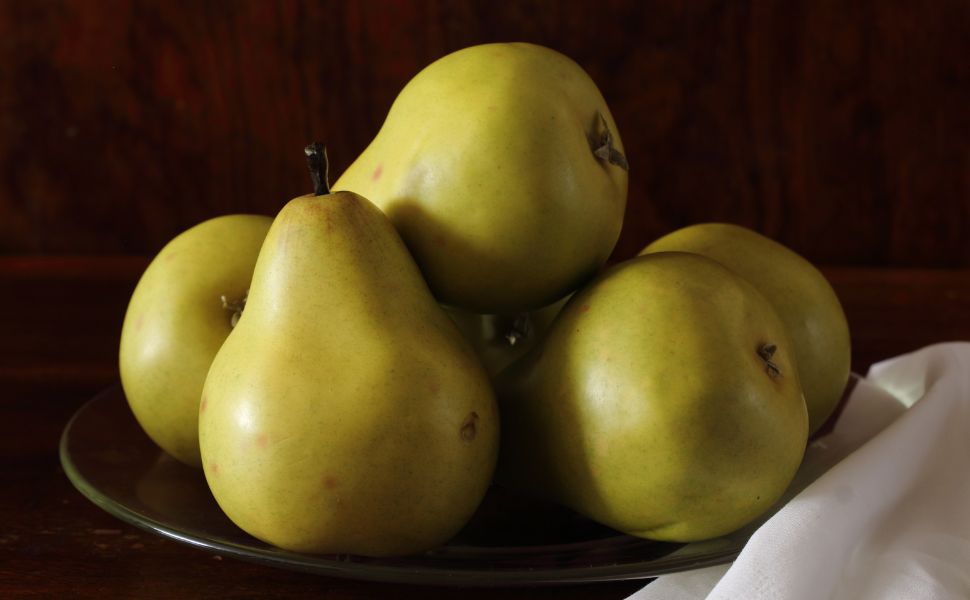What are the best pears for baby food? Choosing the right pear to make baby food makes an interesting decision. Types of pear bring in the type of sweetness, texture and nutrition to baby.
Pears are a popular choice for baby food because of their mild flavor, soft texture, and high nutritional value. When selecting pears for baby food, it’s important to choose the right variety. Here are some of the best pears for baby food and their nutritional benefits.
Table of Contents
Best pears for baby food
- Bartlett Pears:
Bartlett pears are one of the most popular types of pears for baby food because of their sweet taste and soft, juicy texture. They are rich in fiber, vitamin C, and potassium, which are important for your baby’s growth and development.

- Anjou Pears:
Anjou pears have a slightly firmer texture than Bartlett pears, making them a good option for babies who are starting to transition to more textured foods. They are also a good source of vitamin C, potassium, and fiber.
- Bosc Pears:
Bosc pears have a distinctive, slightly grainy texture and a sweet, spicy flavor. They are a good source of fiber, vitamin C, and potassium, and are an excellent choice for babies who are starting to explore different tastes and textures.

- Comice Pears:
Comice pears are sweet, juicy, and buttery, making them best pears for baby food. They are a good source of vitamin C, fiber, and potassium, and their soft texture makes them easy for babies to eat.
When selecting best pears for baby food, choose pears that are ripe but not overripe, as overripe pears can have a mushy texture and a more intense flavor. It’s also important to wash the pears thoroughly before peeling and cooking them.
To prepare best pears for baby food, simply peel and core the pears, then cut them into small pieces. You can then steam, boil, or bake the pears until they are soft and tender. Once the pears are cooked, you can puree them in a food processor or blender, or mash them by hand for a more textured option.
In conclusion, pears are a nutritious and delicious choice for baby food, and the variety you choose will depend on your baby’s preferences and stage of development. By selecting the right type of pear and preparing them properly, you can provide your baby with a healthy and tasty introduction to solid foods.

Pear baby food combinations
Pears are a versatile fruit that can be combined with a variety of other baby-friendly foods to create tasty and nutritious meals for your little one. Here are some popular pear baby food combinations:
- Pear and apple: Combine equal parts peeled and diced apples and pears, then steam or bake until tender. Puree the mixture in a food processor or blender until smooth.
- Pear and banana: Mash a ripe banana with a steamed or baked pear, then mix together until well blended.
- Pear and sweet potato: Peel and dice a sweet potato, then steam or boil until tender. Puree the sweet potato with a steamed or baked pear until smooth.
- Pear and avocado: Cut a ripe avocado in half and remove the pit. Scoop the flesh into a bowl and mash with a steamed or baked pear until well combined.
- Pear and carrot: Peel and chop a carrot, then steam or boil until tender. Puree the carrot with a steamed or baked pear until smooth.
- Pear and butternut squash: Peel and dice a butternut squash, then steam or bake until tender. Puree the squash with a steamed or baked pear until smooth.
- Pear and oatmeal: Cook 1/4 cup of rolled oats with 1/2 cup of water or breast milk until tender. Puree the cooked oats with a steamed or baked pear until smooth.
- Pear baked oatmeal: A versatile recipe to try with babies and toddlers making it a great breakfast option for a family.
These pear baby food combinations offer a variety of nutrients and flavors for your little one to explore. As with all baby foods, it’s important to introduce new flavors and textures gradually and watch for any signs of allergic reaction or digestive issues.
Related: Best apples for baby food
FAQs – Best pears for baby food
What pears are best for baby led weaning?
When it comes to baby-led weaning, it’s important to choose pears that are easy for your baby to hold and manipulate. Here are some varieties of pears that are well-suited for baby-led weaning:
- Bartlett Pears: These pears are soft, juicy, and easy for babies to hold and bite into. They are also sweet and mild, making them a popular choice for young babies who are just starting to explore solid foods.
- Anjou Pears: Anjou pears have a slightly firmer texture than Bartlett pears, which can be helpful for babies who are starting to develop their chewing skills. They are also a good source of fiber, which can help promote healthy digestion.
- Red Pears: Red pears are a colorful and flavorful option for baby-led weaning. They have a firm texture and a sweet, slightly tart flavor that many babies enjoy.
- Asian Pears: Asian pears are crunchy and juicy, which can be a fun and interesting texture for babies to explore. They also have a slightly sweet, mild flavor that is appealing to many babies.
When introducing pears for baby-led weaning, it’s important to cut them into small, bite-sized pieces that are easy for your baby to pick up and hold. You can also try slicing the pears into long, thin strips that your baby can hold and gnaw on.
Do you have to cook pears for baby food?
While it’s not strictly necessary to cook pears before giving them to your baby, cooking can help make them easier to digest and safer for your baby to eat. Raw pears can be a choking hazard for babies, as they can be difficult for their developing digestive system to process.
Cooking pears can also help to break down the fibers and make them easier for your baby to swallow and digest. Cooking can also help to bring out the natural sweetness in the fruit, which can make it more appealing to your baby.
There are several methods you can use to cook the best pears for baby food, including steaming, boiling, baking, or microwaving. To prepare pears for cooking, wash them thoroughly and remove the skin and core. Cut the pear into small pieces and cook until tender, then puree or mash the pear to the desired consistency.
How do I give my 6 month old pears?
If you’re introducing pears to your 6-month-old for the first time, it’s important to do so in a safe and developmentally appropriate way. Here’s how to give your 6-month-old pears:
- Start with pureed or mashed pears: At 6 months old, your baby is likely still developing their chewing and swallowing skills, so it’s best to start with pureed or mashed pears. You can puree or mash steamed or baked pears until they’re smooth and the consistency is appropriate for your baby’s age and development. Offer a small amount of pureed or mashed pear on a spoon and see how your baby reacts. If they seem to enjoy it, you can gradually increase the amount over time.
- Watch for signs of allergy or intolerance: As with any new food, it’s important to watch for signs of allergy or intolerance. Start by offering a small amount of pureed or mashed pear and watch your baby closely for any signs of an allergic reaction, such as hives, swelling, or difficulty breathing. If your baby has a sensitive digestive system, they may also experience gas, bloating, or diarrhea.
- Gradually introduce texture: As your baby becomes more comfortable with pureed or mashed pears, you can gradually introduce more texture. You can do this by mashing the pears less or by offering small, soft pieces of cooked best pears for baby to pick up and explore.
- Offer pears as part of a balanced diet: Pears are a nutritious and tasty addition to your baby’s diet, but it’s important to offer a variety of foods to ensure that your baby is getting all the nutrients they need. Talk to your pediatrician about how to introduce new foods and how to create a balanced diet for your growing baby.
Remember, every baby is different, so it’s important to take your baby’s cues and adjust your approach as needed. Offer pears in a safe and developmentally appropriate way and watch for signs that your baby is ready to try new textures and flavors.
Should I peel pears for baby food?
Whether or not to peel best pears for baby food is a personal choice and can depend on your baby’s age, texture preferences, and any digestive issues they may have. Here are some things to consider when deciding whether to peel best pears for baby food:
- Age: For younger babies who are just starting to eat solid foods, it’s generally recommended to peel pears to make them easier to digest and reduce the risk of choking. As your baby gets older and develops more advanced chewing and swallowing skills, you can gradually introduce foods with more texture, including unpeeled pears.
- Texture: The skin of pears can add some texture to purees or mashes, which some babies may find unappealing. If your baby is sensitive to textures or is having trouble adjusting to new foods, you may want to consider peeling the pears to create a smoother consistency.
- Digestive issues: If your baby has a sensitive digestive system or is prone to constipation, peeling the pears can help make them easier to digest and more gentle on the stomach. The skin of pears contains insoluble fiber, which can be difficult for some babies to digest.
- Nutrients: The skin of pears contains some nutrients, including fiber, vitamin C, and antioxidants. If you choose to leave the skin on, be sure to wash the pears thoroughly to remove any dirt or debris.
Overall, whether to peel the best pears for baby food depends on your personal preferences and your baby’s needs. If you’re unsure, you can try making both peeled and unpeeled pear purees or mashes and see which one your baby prefers.


2 thoughts on “Best pears for baby food”